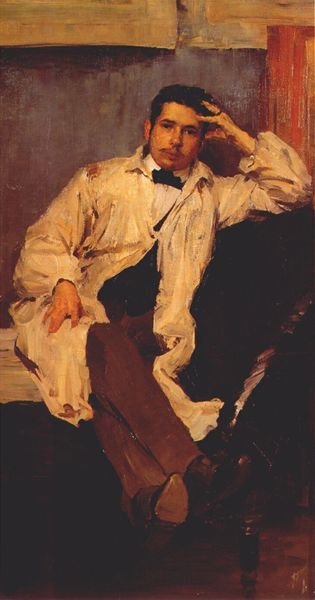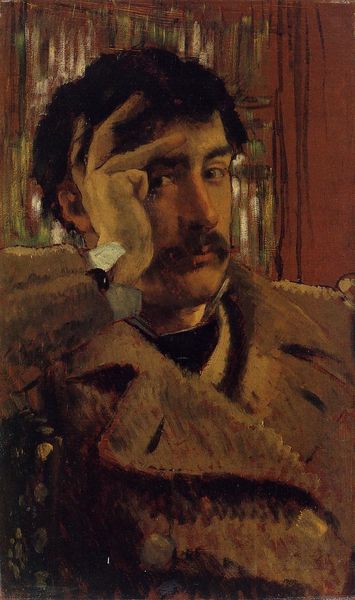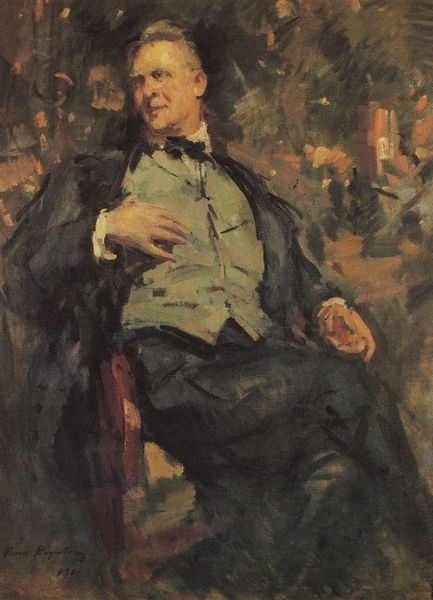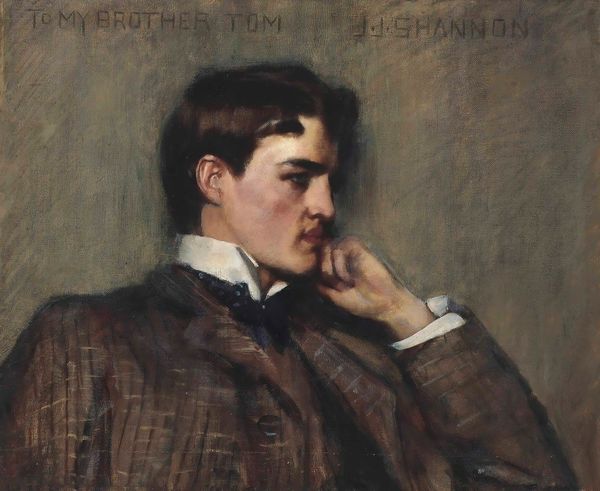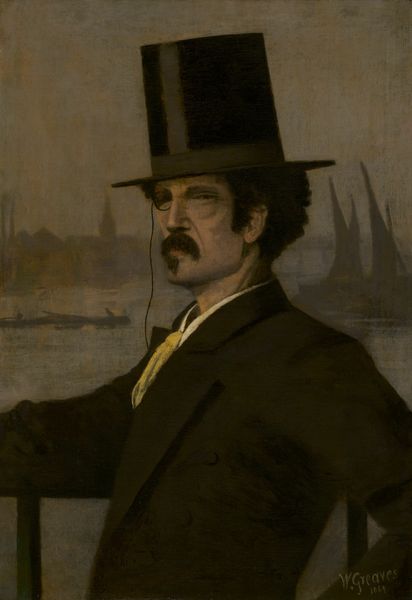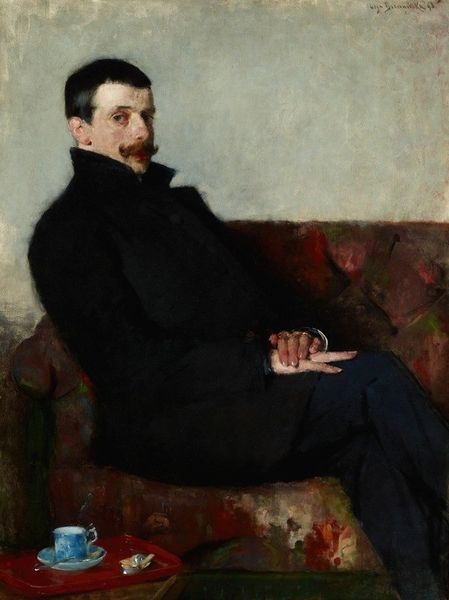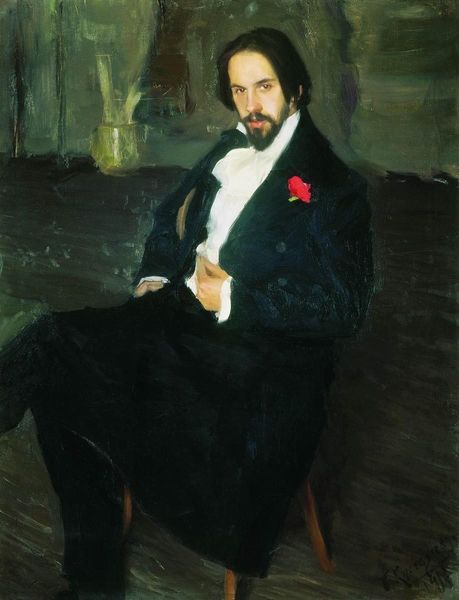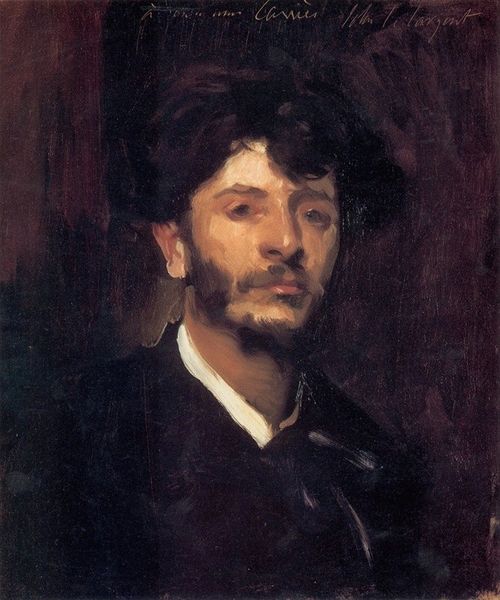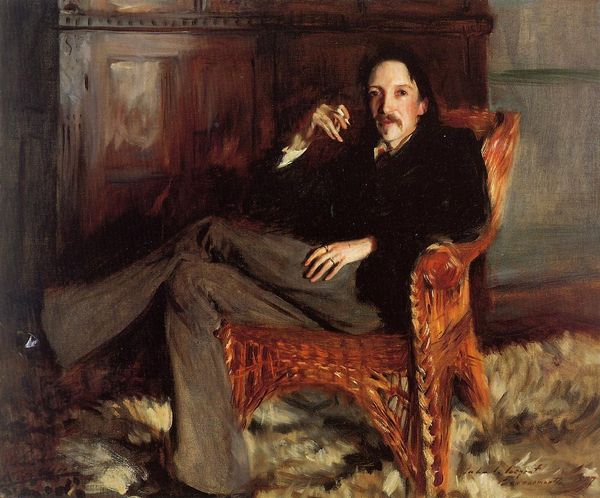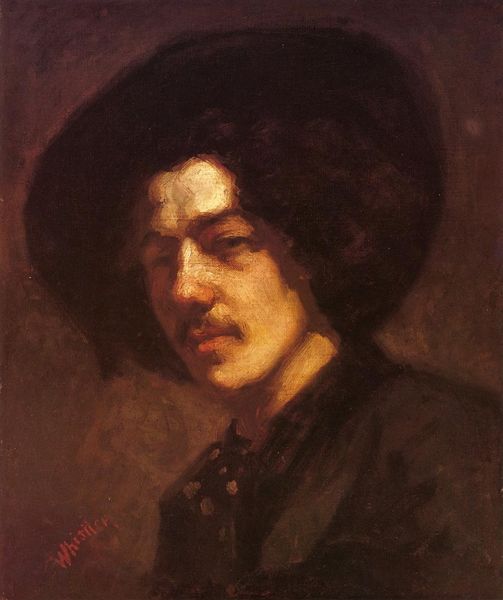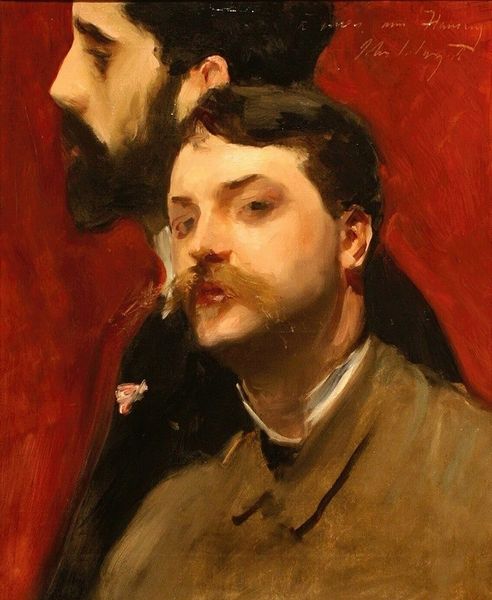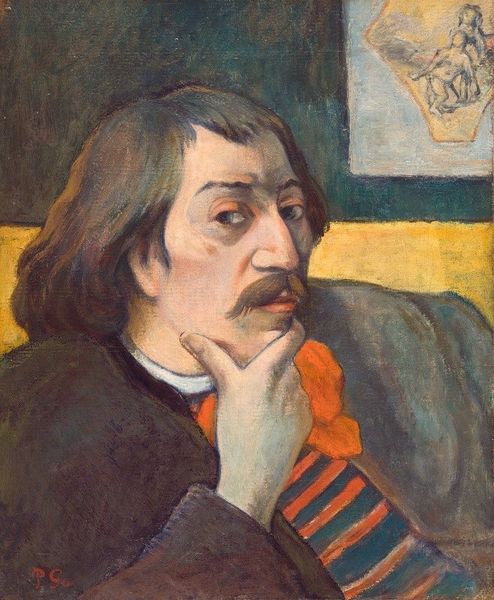
Copyright: Public domain
Editor: We're looking at Boris Kustodiev's "Portrait of Y.I. Lavrin," painted in 1909 using oil paint. There's a real sense of quiet contemplation in the subject, and the brushstrokes feel quite expressive, almost unfinished in places. How would you interpret the composition of this piece? Curator: The composition presents a fascinating interplay of forms. Note how Kustodiev uses a limited, yet impactful, colour palette of mainly blues, greens and reds, subtly juxtaposing areas of impasto against smoother surfaces. Semiotically, the man's pose with his hand touching his face may be decoded as indicative of inner thought. How does the relationship between the dark suit and lighter shirt function formally, within the painting? Editor: It feels like the bright shirt draws the eye directly to his face, creating a strong focal point. But the darkness of the suit also helps to frame him. Is the loose brushwork a characteristic feature of this period? Curator: Indeed. Consider how Kustodiev renders details, such as the gilded cufflinks and his tousled hair. These seemingly informal touches provide visual richness without interrupting the compositional unity. How do those details affect our interpretation of the sitter? Does it evoke a specific socio-economic position? Editor: It gives off the sense of relaxed wealth, maybe intellectualism. I'm now curious to research the artist's body of work in that period and note common colour use and focal techniques. Curator: Exactly. Considering elements as carriers of intrinsic value allows us a deeper comprehension.
Comments
No comments
Be the first to comment and join the conversation on the ultimate creative platform.
